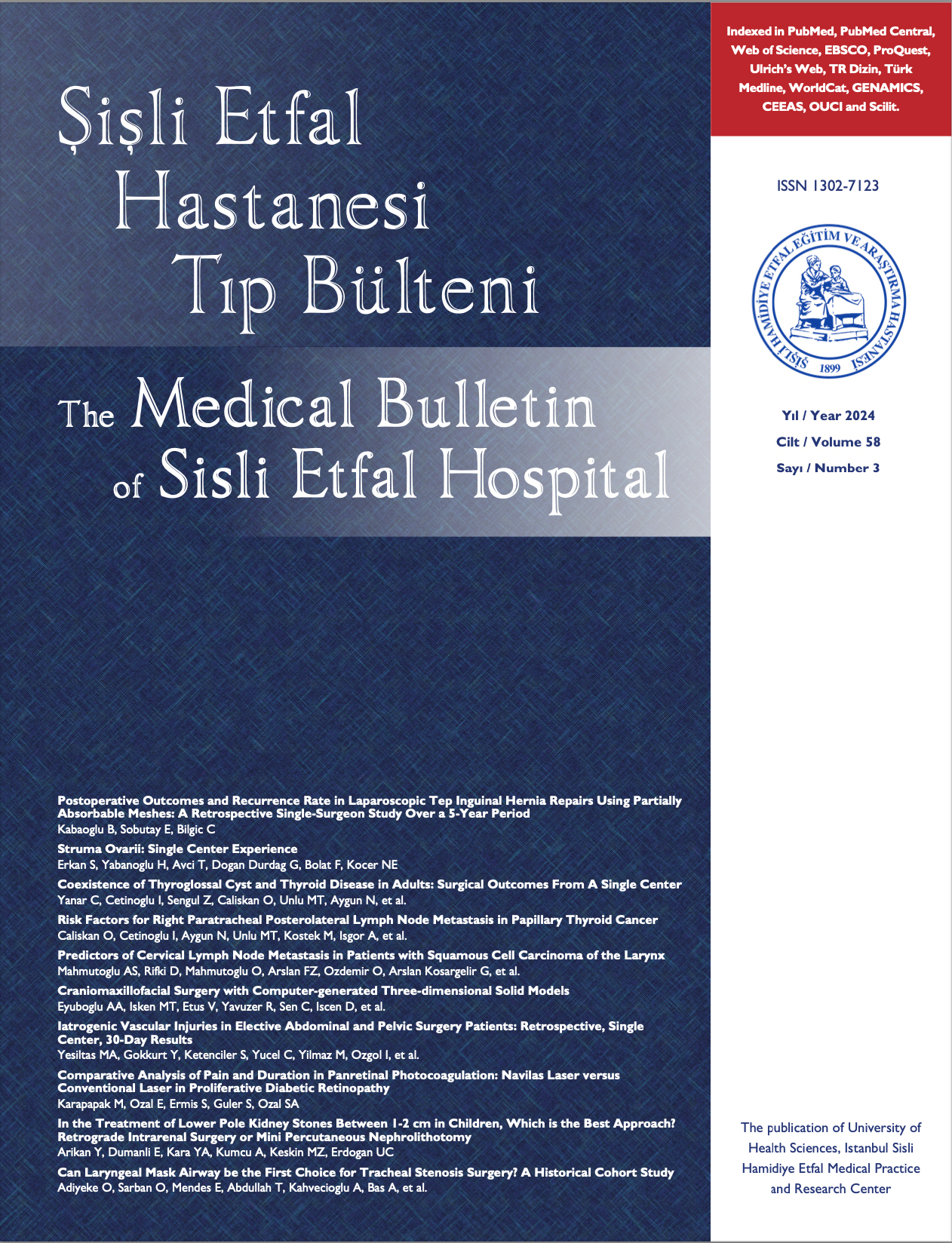
Oligodendrogliomalarda Eksternal Radyoterapi Sonuçlarımız
Alpaslan Mayadağlı, Mehtap Dalkılıç Çalış, Oktay IncekaraŞişli Etfal Eğitim ve Araştırma Hastanesi, Radyasyon Onkolojisi, İstanbulAMAÇ: Oligodendrogliomalar, yetişkinlerde primer intrakranial tümörlerin% 1-5 ini oluşturur. Maksimal cerrahi rezeksiyon arkasından adjuvan radyoterapi önerilir. Bu çalışmada kliniğimize 1 O yıl içinde başvuran oligodendroğlıo!}(l vakaları retrospektif olarak irdelenmiştir.
GEREÇ VE YONTEM: Kliniğimizde 1985-1999 yılları arasında intrakranial tümörlü 615 vaka başvurmuştur. Bunlardan 14 hasta oligodendrogliomadır. (%2.27)Kadın hasta 6. erkek hasta 8 idi. ( Kadın/erkek: 3/4) En sık görülen yeş grubu 40-50 yaş idi. ( 14-72 yaş) 9 hasta grade 2, 2 hasta grade 3, 2 hasta grade 4 oligodendroglioma, 1 hasta grade2 mixed oligodendroglioma - astrositoma. Hastaların tümünde tümör, supratentorial yerleşimliydi. Frontal fob 5, parietal lop 4, parietooksipital fob/ar, 3 temporal lobi, frontotemporoparietal fob 1 hasta da yerleşim yeridir. Karnofsky Performans Skalasına göre; 6 hasta KPS % 90.5 hasta KPS % 70,1 hasta KPS % 50,1 hasta KPS % 30,J hasta KPS %10 durumda idi. En sık uygulanan cerrahi şekli; subtotal rezeksiyon olmuştur. (7 hasta-%50) 4 hasta evre 2a, 7 hasta evre 2b, 3 hasta evre 4 idi. 12 lfastaya total kranial, 2 hastaya parsiyel kranial radyoterapi uygulanmıştır. 11 hastaya postoperatif radyoterapi, 3 inoperabl hastaya biyopsi sonrası radyoterapi uygulanmıştır, 3 hasta KPS düşüklüğü nedeni ile total kranium 30 Gy, 1 O fraksiyonda palyatif, 9 hastaya total kranium + boost toplam 46-60 Gy! 23-30 fraksiyonda, 2 hastaya parsiyel kranium 50 Gy/25 fraksiyonda eksternal radyoterapi uygulanmıştır.
SONUÇ: Halen hastalarımızdan 5 i hastalıksız yaşamaktadır, 9 hasta eksitus olmuştur. 6 hastada hastalıksız yaşam olmamış, 8 hastada ise ortalama hastalıksız yaşam süresi 26 ay olmuştur. Ortalama yaşam süresi 19,7 aydır. (3-55 ay) Eğer hasta uygun şartlarda ise parsiyel kranial radyoterapi ile en uzun hastalıksız ve toplam sağ kalım süreleri elde edilmektedir. ( Hastalıksaz sürvi ortalama 38,5 ay, toplam sağ kalım süresi ortalama 41 aydır.)
Our Results External Radiothrapy in Oligodendrogliomas
Alpaslan Mayadağlı, Mehtap Dalkılıç Çalış, Oktay IncekaraDepartment of Radiation Oncology, Şişli Etfal Training and Research Hospital, Istanbul,TurkeyPURPOSE: Oligodendrogliomas is of 1-5% of primary intracranial tumors in adults. Adjuvant radiotherapy is suggestedfollowing maximal surgical resection. This study retrospectively evaluates the oligodendroglioma cases who applied to our clinic in 10 years.
MATERIALAND METHOD: 615 cases with intracranial tumors applied to our clinic between 1985-1999. 14 patients had oligodendrogliomas (2.27%). 6 werefemale and 8 were male. (Female!Male: 314). The most common age range was endroglioma-astrocytoma. in ali patients the tumor had supratentorial localization. The tumor was in the frontal lobe in 5, parietal lobe in 4, parietooxypital lobes in 3, temporal lobe in 1, and frontotemporoparietal lobes in 1 patient. According to Karnofsky Performance Scale (KPS); 6 patients were at 90%, 5 were at 70%, 1 was at 50%, 1 was at 30%, 1 was at 10% status. The mostfrequent surgery was subtotal resection (7 patients-50%). 4 patients were at stage 2a, 7 at stage 2b, 3 at stage 4. 12 patinets ad total cranial, 2 had partial cranial radiotherapy, 11 patients had postoperative radiotherapy, 3 inoperable patients had radiotherapy following biopsy. 3 patients had palliative total cranial radiotherapy of 30 Gy! 10 fraction due to low KPS, 9 had total cranium+boost radiotherapy of total 46-60 Gy/23-30 fraction, 2 had partial cranial radiotherapy of 50 Gy/25 fraction.
RESULTS: 5 of our patients currently survive disease-free, 9 are excitus, 6 had no disease-free survival, and 8 had an average disease free survival of 26 months. The mean survival is 19.7 mounths (3-55 months). lf the patients condition is appropriate, partial cranial radiotherapy yields the longest disease-free and total survival times. (The mean disease-free survival is 38.5 months and the total survival is 41 months).
Makale Dili: Türkçe



















